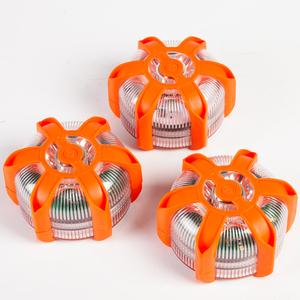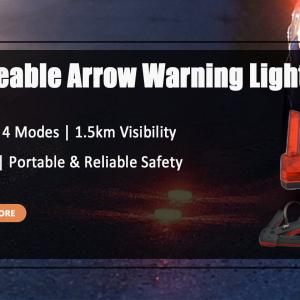Common Warning Light Misuse Cases & How to Avoid Them | Safety Tips 2025
Warning lights play a crucial role in ensuring visibility and safety in construction zones, emergency scenes, road operations, and industrial settings. However, incorrect usage can completely compromise their effectiveness — and in some cases, lead to serious accidents. In this article, we’ll explore common warning light misuse cases and offer best-practice tips to avoid them.
1. No Warning Lights in Construction Zones
The Mistake: Relying only on traffic cones or signs without deploying flashing warning lights, especially at night or in low-visibility conditions.
The Risk: Drivers may fail to see the work zone in time, leading to vehicle collisions or injuries.
Best Practice: Use high-visibility LED warning lights at all construction entrances and hazard points — especially after dark or during poor weather.
2. Using Dead or Weak Battery Lights
The Mistake: Warning lights are left unchecked for weeks, resulting in dim or completely dead lights that no longer alert people effectively.
The Risk: A “dead light” creates a false sense of security and increases the likelihood of accidents.
Best Practice: Choose warning lights with battery indicators or solar charging. Establish a routine maintenance schedule to ensure lights remain functional.
3. Low-Brightness Lights in Bright Conditions
The Mistake: Using low-lumen lights during daytime or in bright environments where visibility is poor.
The Risk: Lights become nearly invisible, offering no warning to pedestrians or drivers.
Best Practice: Opt for high-lumen LED warning lights with automatic brightness adjustment for both daytime and nighttime use.
4. Wrong Light Color for the Application
The Mistake: Using the wrong light color — such as yellow instead of red for emergencies, or using blue lights for general warnings.
The Risk: Misidentification and confusion among workers or drivers, potentially delaying response or creating chaos.
Best Practice: Follow international or regional color standards (e.g., red for emergency stop, yellow for caution, blue for law enforcement) based on your specific industry or location.
5. Improper Placement or Obstructed Lights
The Mistake: Installing the light too low (e.g., on the ground or bumper) or placing it behind objects that block visibility.
The Risk: Light cannot be seen from a safe distance, defeating its purpose.
Best Practice: Mount lights at elevated and unobstructed locations — such as vehicle rooftops, poles, or site perimeters — for maximum visibility.
Conclusion: Use Warning Lights the Right Way — Every Time
Whether you’re working on a roadside project, managing an industrial site, or handling a nighttime emergency, warning lights are your frontline defense. By avoiding the mistakes above and choosing reliable, weather-resistant, high-brightness LED warning lights, you can drastically reduce the risk of incidents and improve workplace safety.





